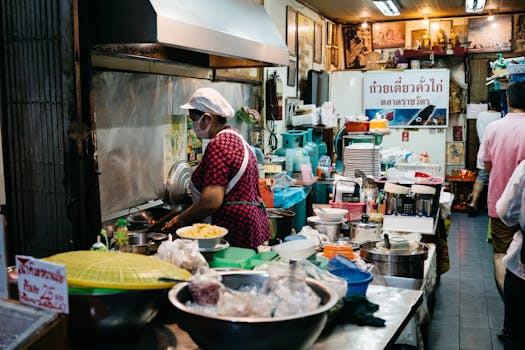
Culinary Adventures: Exploring Europe’s Food Scene in 2025
Culinary Adventures: Exploring Europe’s Food Scene in 2025 is an exciting journey that awaits food enthusiasts and travelers alike. Europe, with its rich culinary heritage, offers a diverse and ever-evolving food scene that is shaped by its history, culture, and geography. From the snow-capped Alps to the sun-kissed Mediterranean beaches, each region boasts its unique flavors, ingredients, and cooking techniques.
Introduction to Europe’s Food Scene
Europe’s food scene is a melting pot of traditional and modern cuisine, reflecting the continent’s complex history and cultural exchange. The culinary landscape is characterized by a wide range of ingredients, from fresh seafood and meats to an array of fruits, vegetables, and grains. European cuisine is also known for its variety of cheeses, wines, and other beverages, which play a significant role in shaping the local food culture.
Regional Culinary Specialties
Europe is home to numerous regional specialties, each with its own distinct flavors and cooking methods. The Mediterranean region is famous for its olive oil-based cuisine, featuring dishes like Greek salad, Spanish paella, and Italian pasta. Northern Europe, on the other hand, is known for its hearty meat stews, bread, and beer. The Alpine region is famous for its fondue, raclette, and other cheese-based dishes, while Eastern Europe is renowned for its pierogies, dumplings, and other savory pastries.
Modern Trends in European Cuisine
In recent years, European cuisine has undergone significant changes, with a growing emphasis on sustainability, locally sourced ingredients, and innovative cooking techniques. The rise of plant-based cuisine, food trucks, and street food has also transformed the culinary landscape. Many European cities now offer a wide range of international cuisine, reflecting the continent’s cultural diversity and cosmopolitan character.
Iconic Dishes and Beverages
Europe is home to a plethora of iconic dishes and beverages that are an integral part of its culinary heritage. Some of the most famous European dishes include Italian pizza, French escargots, Spanish tapas, German sausages, and British fish and chips. The continent is also renowned for its rich tradition of coffee culture, with cities like Vienna, Rome, and Paris offering some of the world’s best coffee experiences.
Food Festivals and Markets
Europe’s food festivals and markets are a great way to experience the continent’s culinary diversity and vibrancy. From the cherry blossom festival in Germany to the tomato-throwing festival in Spain, there are numerous events that celebrate local ingredients and cuisine. Many European cities also host weekly or monthly markets, offering a wide range of artisanal products, street food, and local specialties.
Conclusion
In conclusion, Culinary Adventures: Exploring Europe’s Food Scene in 2025 is an exciting journey that offers a wealth of culinary experiences, from traditional dishes to modern trends and innovative cooking techniques. Whether you’re a food enthusiast, a traveler, or simply a curious explorer, Europe’s diverse food scene is sure to delight and inspire your senses.


